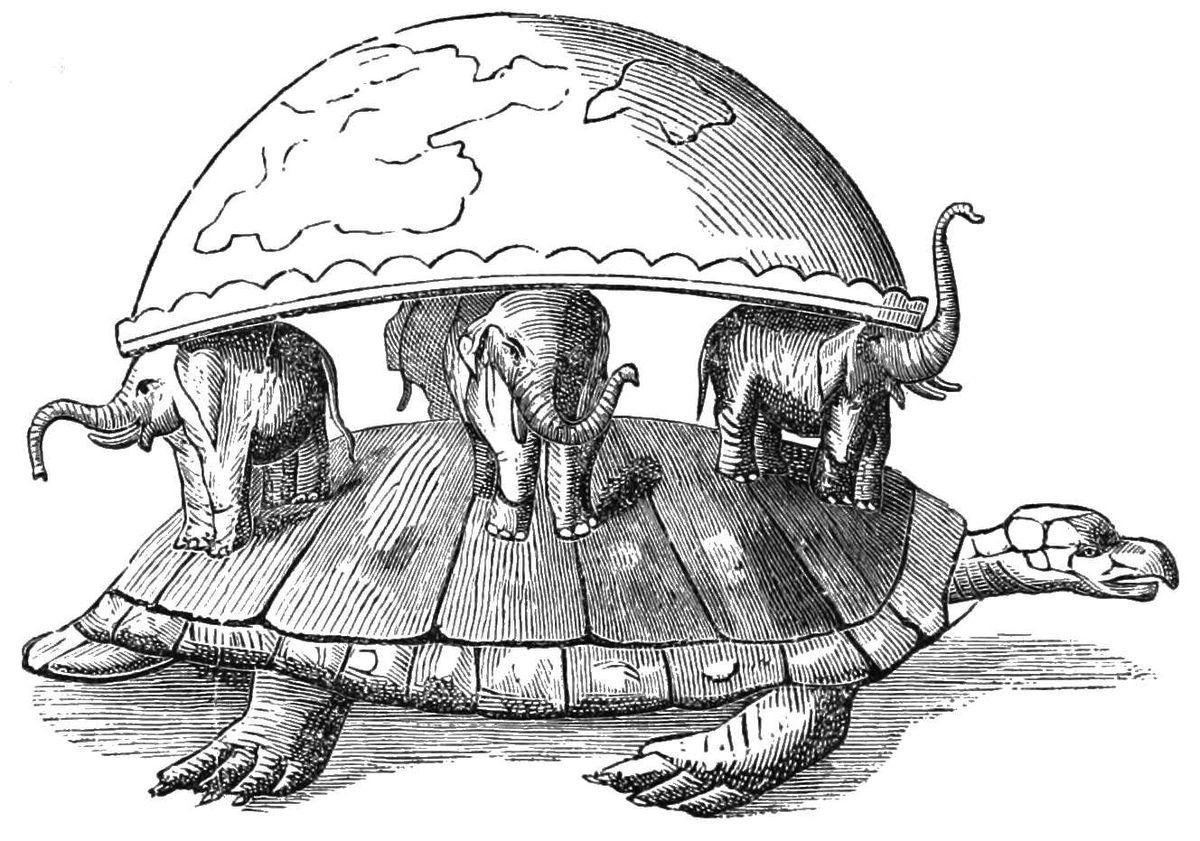What is one of the most popular questions that our mobile planetarium visitors ask us after the show? “How do we know that the Earth is not flat?“
Many feel a bit silly asking this question since the fact that our planet is round was one of the first things we all learned at school. But I believe that we, as educators, should feel happy when our learners air their doubts and ask “why” questions about fundamental facts. We don’t want the children to simply accept and memorize scientific concepts, we want them to doubt them, we want them to ask for the proof. This is the way to nurture a scientific mind. After all, we might be totally wrong about the whole order of things in the Universe.
The problem is, from where we live we get a very distorted picture of the World. When we look around, all we see is the flat ground, stationary Earth with the Sun and the planets circling around it. It took a long time, years of observations and lots of groundbreaking ideas to give us the modern view of the Universe. And the spherical shape of the Earth was one of the first mysteries that the humankind have cracked.
Who was the first to notice that the Earth was round
The early cultures all seemed to share the Flat Earth belief. We know the myths of the platter-shaped Earth floating in the ocean or being held by the elephants standing on the turtle. Chinese believed the Earth was flat and square and was surrounded by heavens.
Gradually the Flat Earth view gave way to the Spherical Earth.
Now it is impossible to tell who was the first to point it out. Pythagoras, the famous Greek polymath, usually gets credits for the discovery of the spherical shape of the Earth, though it is likely that the idea was known for some time before him.
Over a hundred years later, another Greek scientist, Aristotle, finally provided us with the observational proof that the Earth had a spherical shape! You can read the translation of his original text here http://www.sacred-texts.com/cla/ari/oth/oth26.htm.
One more century passed before someone measured how big the sphere was! Eratosthenes, another genius Greek, quite accurately measured the circumference of the Earth using only simple geometry.
Eventually Sir Isaac Newton figured out that the Earth was not a perfect sphere, but a slightly squashed one! This shape is now called an oblate spheroid.
So …how to prove that our planet is spherical
The easiest way seems to be to go up into Space and have a good look.
Soviet cosmonaut Alexey Leonov, the first person to go on a spacewalk, described his experience as: “The Earth was absolutely round. I believe I never knew what the word round meant until I saw Earth from space”.
But if you are not an astronaut in training, you will most likely to need a plan B.
Feel free to choose from the list or come up with your own!
- Ships. (This is one of the first fun things I learned at school) Watch the ship leave the port and head for the open sea. You will see the ship not just getting smaller, but also ”sinking into the water” as it disappears below the horizon (starting from the lower part).
- Magellan’s way. Set off on a journey around the World and return to the same point where you started from. There is even a term for that, circumnavigation! Though really hope you will have a better luck.
- Watch the stars. You will notice that in different hemispheres you can see different constellations.
- Lunar eclipses. As the Moon passes through the Earth’s shadow, we can clearly see that the shadow of the Earth is always curvy!
- The taller you are, the further you see. Sit down on the ground and look around. How far can you see? Now stand up and do the same. Now climb a lamppost. There is an interesting tool called Earth Curve Calculator. It shows what part of a faraway object will be obscured from your view due to the curvature of the Earth depending on your “eye height”.
- Measure the shadow. That’s exactly what Eratosthenes did (and yes, you can also calculate the circumference)! Just measure the length of the shadow of a stick i the same time but in different places. It will be different, meaning that the sunlight falls there at different angles!
- Common sense. The stars and planets that we observe are all round. So why should our planet be any different?
Any other ideas?

